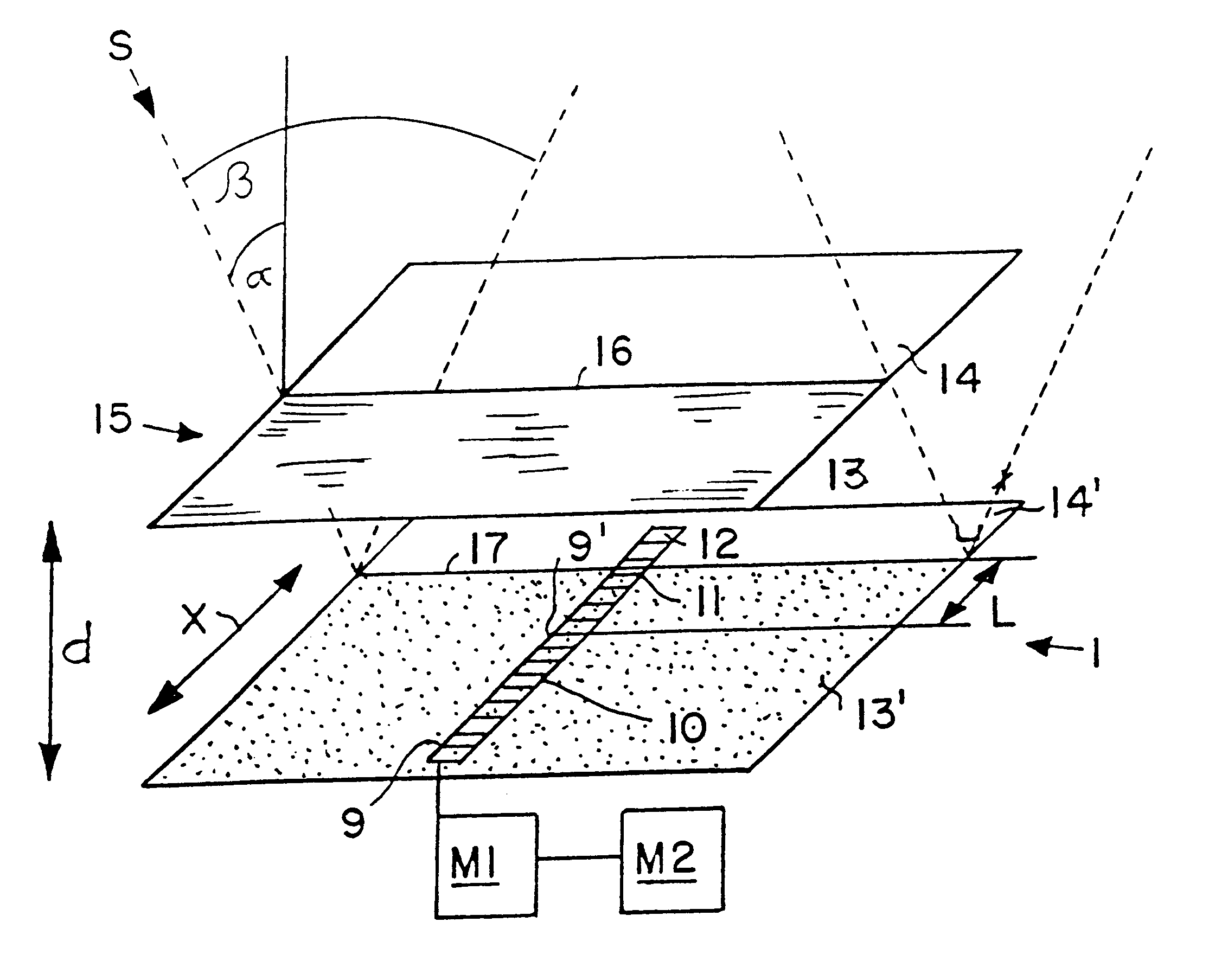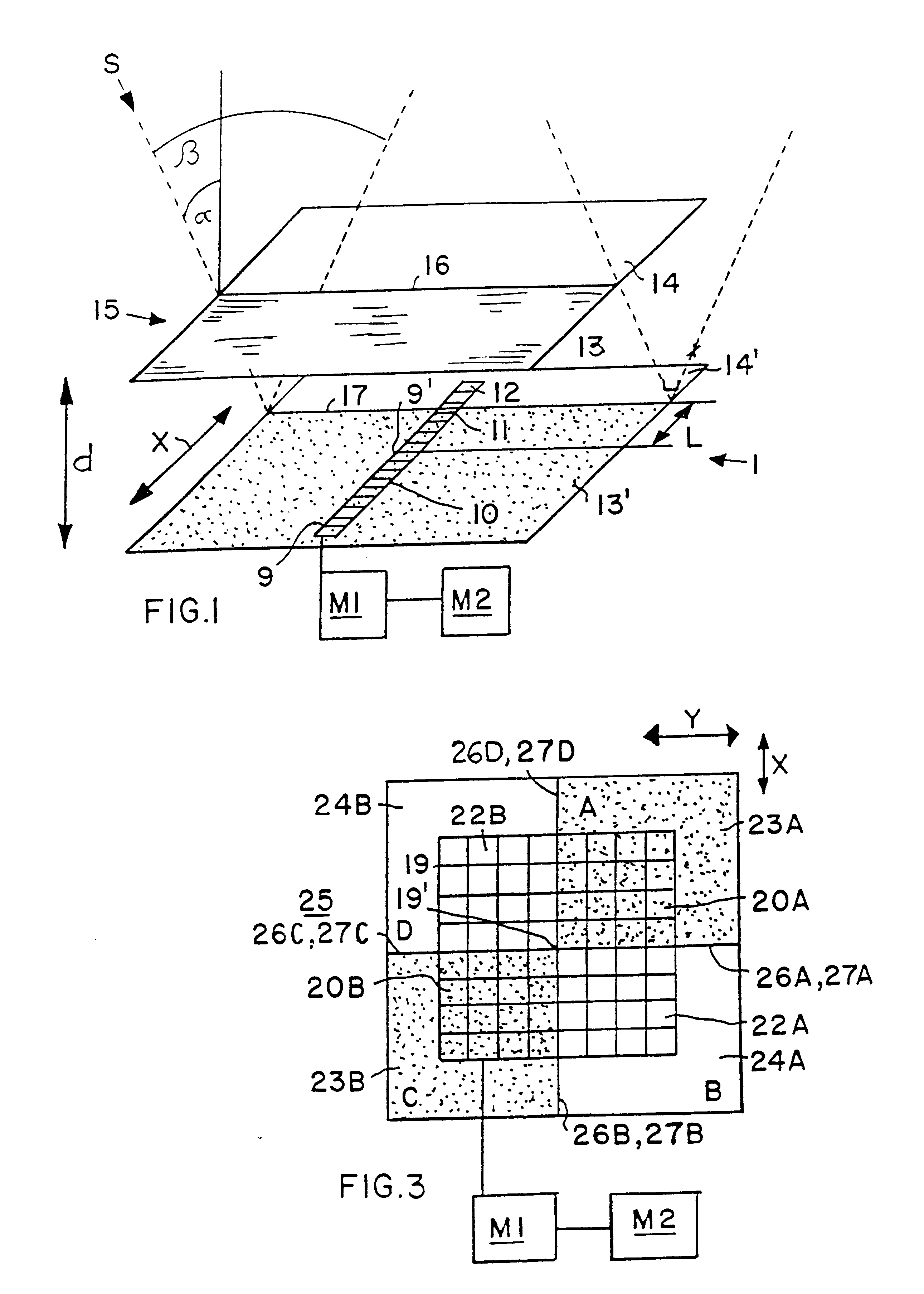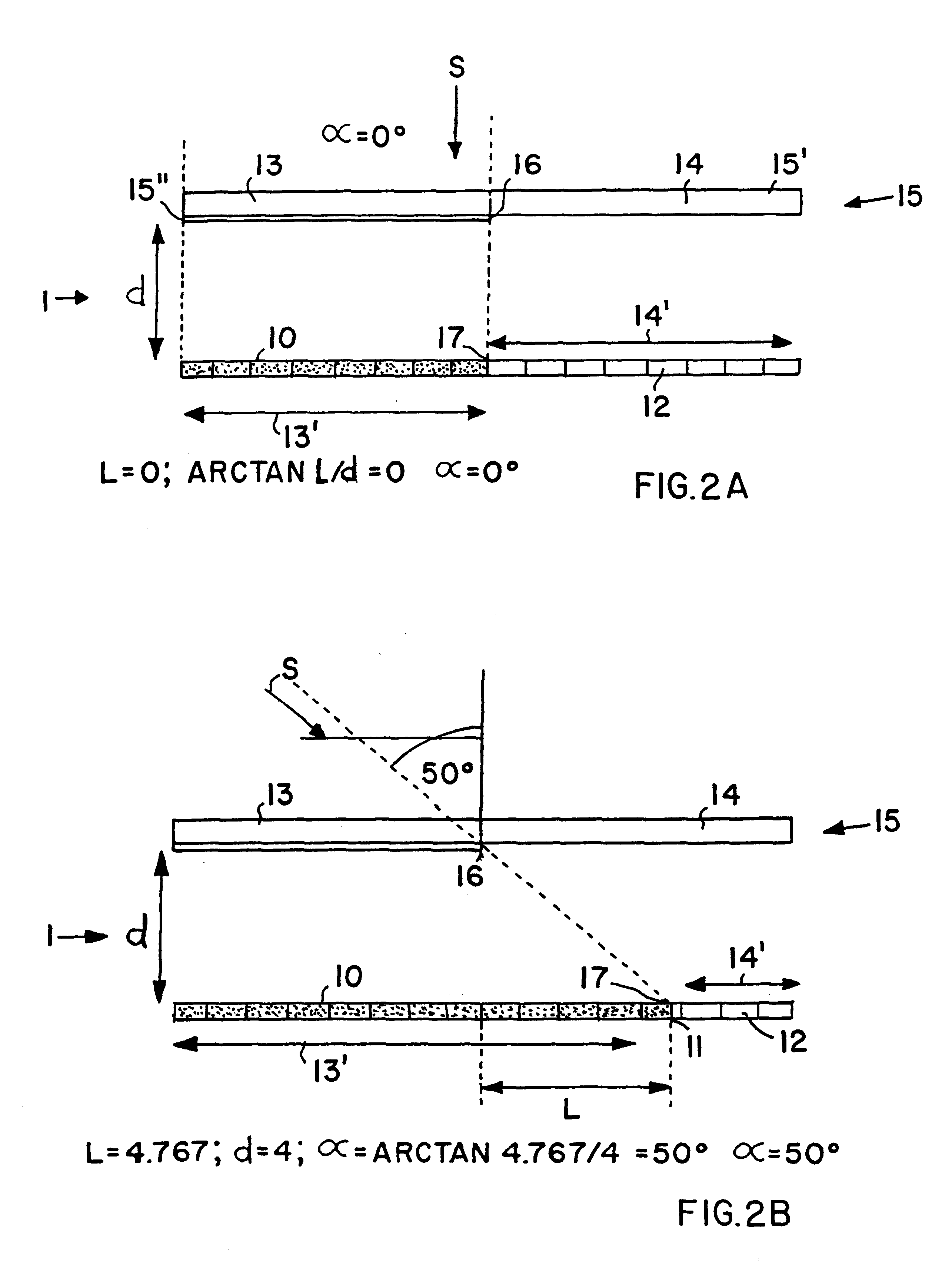Arrangement for determining the incidence angle of radiation and especially solar radiation
a technology of radiation incidence angle and arrangement, which is applied in the direction of optical radiation measurement, instruments for comonautical navigation, etc., can solve the problems of complicated manufacturing, and insufficient precision in the determination of incidence angl
- Summary
- Abstract
- Description
- Claims
- Application Information
AI Technical Summary
Benefits of technology
Problems solved by technology
Method used
Image
Examples
Embodiment Construction
FIG. 1 schematically shows a device 1 for determining the incidence angle .alpha. of incident radiation, and particularly solar radiation S from the sun. Thus, the device 1 is particularly a sun sensor 1 in this example. The sun sensor 1 comprises a one-dimensional or linear photosensor array 9 including a plurality of light sensitive elements 10, 11 and 12 arranged linearly one after another extending along a first linear direction X. A center of the linear array 9 is designated as 9'. The linear photosensitive array 9 is embodied as a single monolithic detector array, wherein the individual light sensitive elements 10, 11 and 12 are each rectangular or quadrilateral and arranged immediately contiguous with one another. In the present example, the array 9 includes a total of sixteen light sensitive elements 10, 11 and 12, whereby thirteen of the elements 10 are completely shaded, one element 11 is partially shaded, and two of the elements 12 are completely illuminated by the incide...
PUM
 Login to View More
Login to View More Abstract
Description
Claims
Application Information
 Login to View More
Login to View More - R&D
- Intellectual Property
- Life Sciences
- Materials
- Tech Scout
- Unparalleled Data Quality
- Higher Quality Content
- 60% Fewer Hallucinations
Browse by: Latest US Patents, China's latest patents, Technical Efficacy Thesaurus, Application Domain, Technology Topic, Popular Technical Reports.
© 2025 PatSnap. All rights reserved.Legal|Privacy policy|Modern Slavery Act Transparency Statement|Sitemap|About US| Contact US: help@patsnap.com



